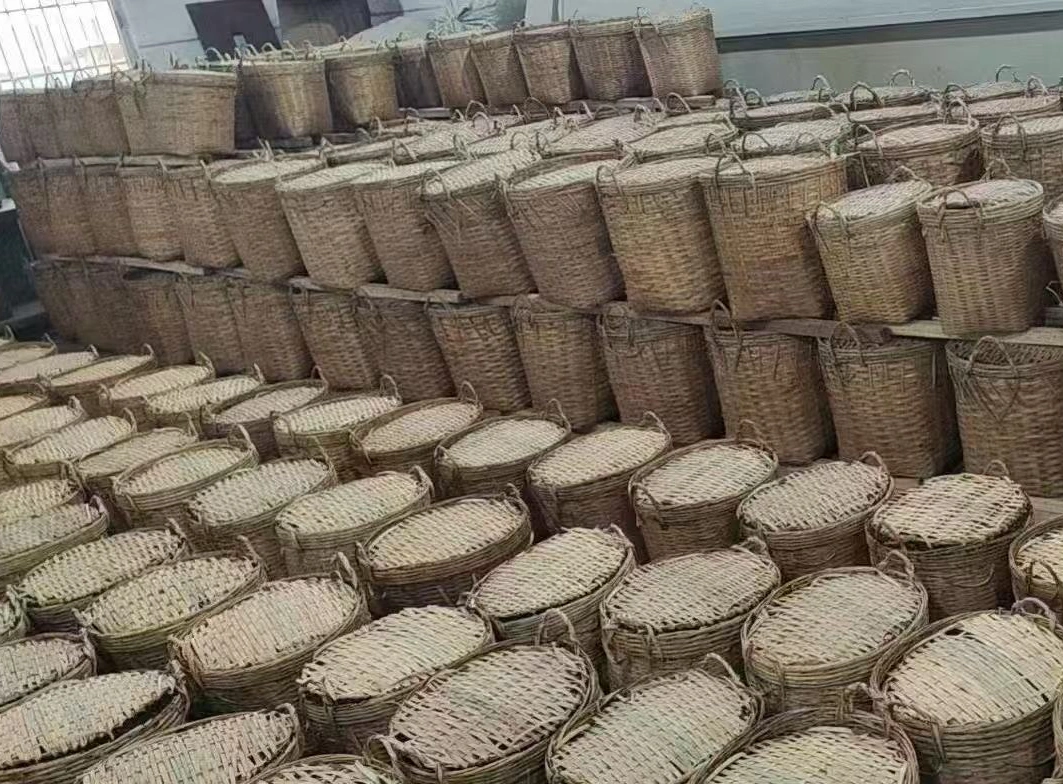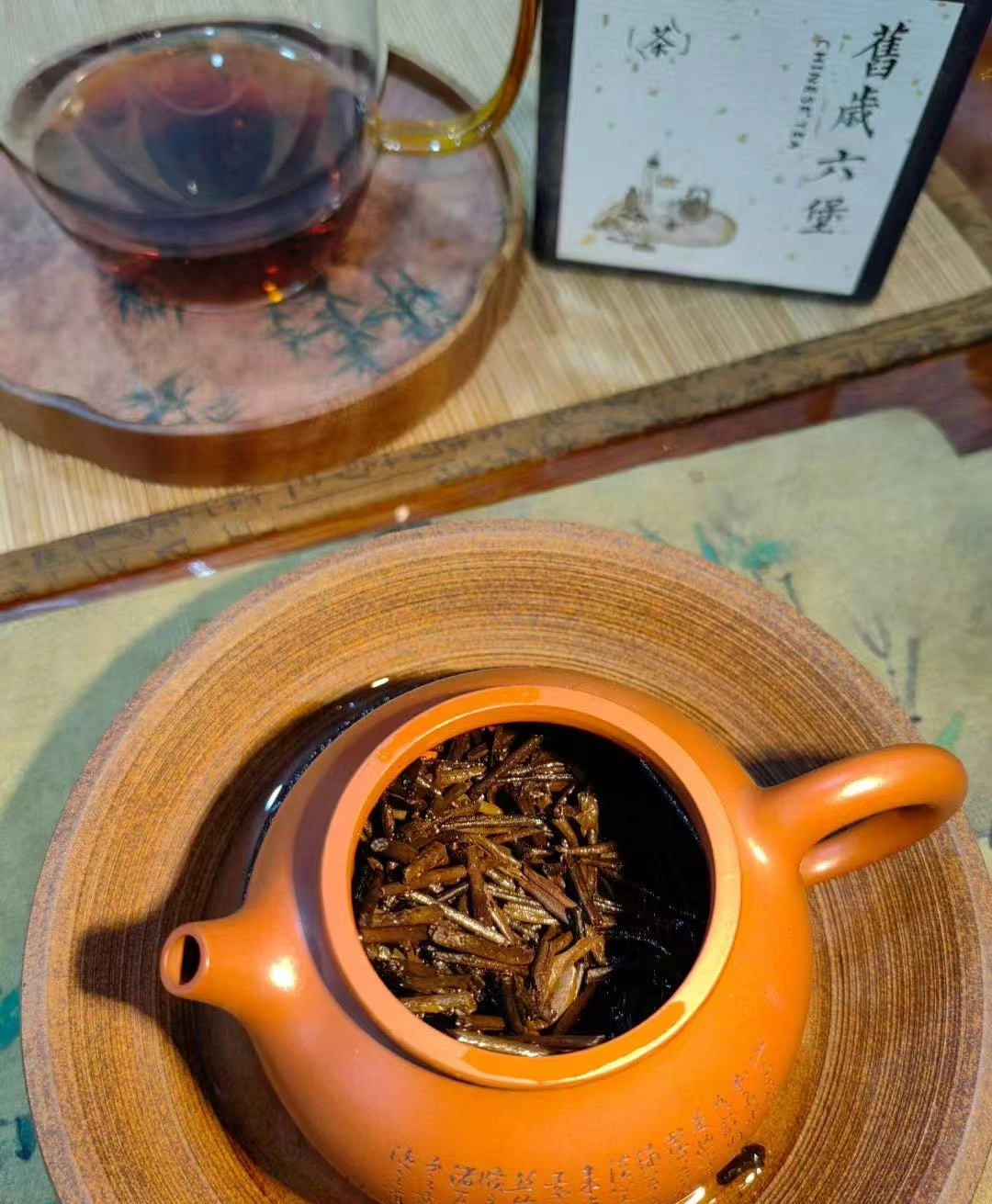“Tea tempers the spirit, harmonizes the mind, and dispels stagnation,” declared Lu Yu in The Classic of Tea (《茶经》), a testament to tea’s sacred role in Chinese philosophy. Among all teas, dark tea (Hei Cha) is the enigmatic alchemist—deep, earthy, and forged through centuries of microbial magic. Picture unearthing a buried treasure: smoky whispers of aged oak, velvet-rich liquor that coats the palate like molten amber, and a fragrance reminiscent of monsoon-soaked forests in Yunnan. This is dark tea—a brew that fueled caravans along the Ancient Tea Horse Road, guarded empires’ health, and now captivates modern seekers of wellness. Let’s decode its secrets, from microbial fermentation to the allure of Liubao tea.
1. What is Dark Tea? The Art of Transformation
Dark tea, China’s “living tea”, undergoes post-fermentation—a process where microbes like Aspergillus niger reshape its soul. Born in the Tang Dynasty (618-907 AD), it was traded as currency on the perilous Tea Horse Road. Unlike green tea’s freshness or black tea’s boldness, dark tea embraces controlled decay: piled, moistened, and left to ferment for weeks. The result? Leaves that age like fine wine, gaining woody complexity and medicinal potency over decades.

2. Crafting Dark Tea: Microbes as Master Brewers
The journey begins with sun-dried leaves from ancient tea trees. Key steps:
- Kill-Green (杀青): Halts oxidation with quick heating.
- Piling (渥堆): Leaves are stacked, sprayed with water, and covered—microbial symphonies generate heat (40-60°C), transforming bitterness into mellow sweetness.
- Aging: Stored in bamboo baskets or caves, where golden flowers (Eurotium cristatum) bloom, adding medicinal value.
A 20-year-old Pu’er cake whispers tales of forest moss and dried plums—a sensory time capsule.
3. Types of Dark Tea: From Pu’er to Liubao’s Mystique
- Yunnan Pu’er:
- Raw (Sheng): Ferments naturally, tart and wild like young pu-erh.
- Ripe (Shou): Accelerated fermentation, chocolatey smoothness.
- Guangxi Liubao Tea: Known for its betel nut aroma—a mix of camphor and damp earth, historically stored in bamboo baskets.
- Hunan Anhua Dark Tea: Smoky and robust, traditionally compressed into “thousand-taels tea” bricks.
4. 6 Science-Backed Health Benefits of Dark Tea
- Gut Health Guardian: Probiotics in Liubao tea improve digestion (Journal of Agricultural Food Chemistry, 2021).
- Cholesterol Buster: Pu’er’s statin-like compounds reduce LDL by 35% in trials.
- Anti-Diabetic Warrior: Polysaccharides regulate blood sugar spikes.
- Liver Shield: Accelerates alcohol metabolism by 20%.
- Antioxidant Powerhouse: Theabrownins outmatch green tea’s EGCG.
- Low-Caffeine Calm: 25-40mg per cup—ideal for evening sipping.
5. Dark Tea vs. Other Teas: The Fermentation Factor
- Green Tea: Zero fermentation; loses potency after 1 year.
- Oolong Tea: Partial oxidation; lacks microbial benefits.
- Herbal Tea: No true tea leaves; misses dark tea’s metabolic magic.
6. Brewing Dark Tea: 3 Rituals to Awaken Its Soul
- Traditional Boil: Simmer aged tea bricks with ginger for a smoky elixir.
- Gongfu Style: Use a Yixing clay teapot—5-8g leaves, 10°C water, 10s rinse, then 15-30s steeps yielding molasses-dark nectar.
- Cold Brew: Steep 3g in cold water for 6 hours—crisp minerality perfect for summer.

7. Buying & Aging Dark Tea: Secrets from Masters
- Avoid Fakes: Genuine aged Pu’er has uniform mold spots (not blotchy).
- Liubao’s Golden Flowers: White speckles signal quality fermentation.
- Storage: Clay jars in 60-70% humidity—let it breathe like a living organism.
8. 5 Dark Tea Myths Busted
- “All dark teas taste the same.” → Liubao’s betel nut notes vs. Pu’er’s earthiness prove otherwise.
- “It’s just moldy tea!” → Controlled fermentation kills harmful pathogens.
- “Drink it only hot.” → Try chilled Liubao tea—refreshingly medicinal.



